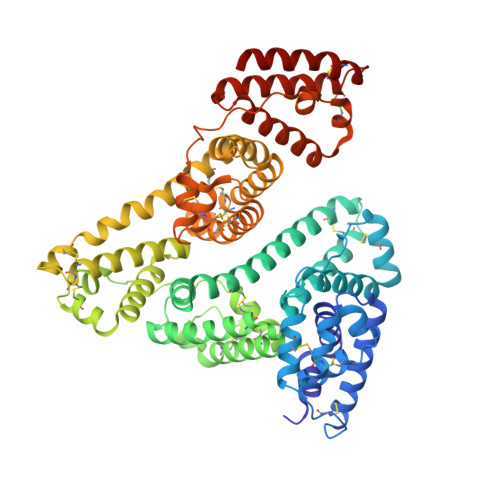Investigation of the Interaction between Human Serum Albumin and Branched Short-Chain Perfluoroalkyl Compounds.
Moro, G., Liberi, S., Vascon, F., Linciano, S., De Felice, S., Fasolato, S., Foresta, C., De Toni, L., Di Nisio, A., Cendron, L., Angelini, A.(2022) Chem Res Toxicol 35: 2049-2058
- PubMed: 36148994
- DOI: https://doi.org/10.1021/acs.chemrestox.2c00211
- Primary Citation of Related Structures:
7Z57 - PubMed Abstract:
The current trend dealing with the production of per- and polyfluoroalkyl substances (PFASs) involves the shifting toward branched short-chain fluorinated compounds known as new-generation PFASs. A key aspect to be clarified, to address the adverse health effects associated with the exposure to PFASs, is their binding mode to human serum albumin (hSA), the most abundant protein in plasma. In this study, we investigated the interaction between hSA and two representative branched short-chain PFASs, namely, HPFO-DA and C6O4. In-solution studies revealed that both compounds bind hSA with affinities and stoichiometries lower than that of the legacy long-chain perfluoroalkyl compound PFOA. Competition experiments using hSA-binding drugs with known site-selectivity revealed that both HPFO-DA and C6O4 bound to pockets located in subdomain IIIA. The crystal structure of hSA in complex with HPFO-DA unveiled the presence of two binding sites. The characterization and direct comparison of hSA interactions with new-generation PFASs may be key elements for the understanding of the toxicological impact of these compounds.
Organizational Affiliation:
Department of Molecular Sciences and Nanosystems, Ca' Foscari University of Venice, Via Torino 155, 30172 Venice, Italy.


















